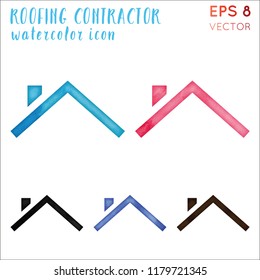Explore The Factors Low-VOC Paints Are Significantly Important For Preserving Much Healthier Homes, Yet Take Into Consideration Whether Their Drawbacks Exceed The Advantages. Figure Out The Facts Inside
Explore The Factors Low-VOC Paints Are Significantly Important For Preserving Much Healthier Homes, Yet Take Into Consideration Whether Their Drawbacks Exceed The Advantages. Figure Out The Facts Inside
Blog Article
Content By-Melton Ralston
When you consider painting your home, you may overlook the importance of the paint's structure. Low-VOC paints are designed to decrease indoor air contaminants, making them a smarter option for your family's wellness and the setting. While they include specific disadvantages, like longer drying times, they also offer contemporary looks and boosted efficiency. You might wonder if the benefits genuinely surpass the disadvantages, particularly when you're going for a fashionable finish. Comprehending the full scope of low-VOC alternatives could transform your point of view on your following paint project.
Understanding Low-VOC Paints
When you choose low-VOC paints, you're choosing an item that releases less volatile organic substances, which can be unsafe to both your health and wellness and the atmosphere.
VOCs are chemicals found in numerous paint products that can vaporize right into the air and add to indoor air pollution. By picking low-VOC options, you're lowering the number of these discharges, making your home more secure.
Low-VOC paints usually consist of 50 grams per liter or fewer VOCs, contrasted to traditional paints that can consist of approximately 250 grams per liter. This implies that when you paint your home with low-VOC products, you're not simply making a choice for aesthetics; you're additionally taking a step in the direction of a healthier interior atmosphere.
These paints come in a selection of finishes and shades, so you won't have to compromise on design. They appropriate for both exterior and interior tasks, giving durability and protection like their traditional counterparts.
Plus, many manufacturers are currently focusing on developing low-VOC solutions without giving up performance. Recognizing low-VOC paints equips you to make informed choices for your home and well-being while adding to environmental conservation.
Benefits of Low-VOC Options
Why choose low-VOC choices for your painting jobs? First of all, they're better for your health. Low-VOC paints produce fewer unstable natural substances, which suggests you minimize your direct exposure to hazardous chemicals. This is particularly crucial if you're repainting inside your home or have youngsters and pets in the house.
You'll likewise appreciate the ecological benefits. These paints contribute less to air contamination, making them a greener selection. By choosing low-VOC choices, you're supporting sustainable methods and helping to develop a healthier earth.
go here is the enhanced indoor air top quality. Low-VOC paints aid keep fresher air in your house, which can lead to an extra comfy living space.
Plus, many low-VOC paints are just as sturdy and long-lasting as standard alternatives, so you will not sacrifice top quality for safety and security.
Finally, you'll discover a wide variety of shades and surfaces offered in low-VOC formulas, so you can still attain the appearance you desire without compromising on your health or the environment.
Picking low-VOC paints is a smart, liable decision for your paint jobs.
Possible Downsides to Think About
While low-VOC paints provide many advantages, there are some prospective downsides to bear in mind. please click the next web page is their performance contrasted to traditional paints. Low-VOC choices might not always give the exact same degree of longevity and protection, which can lead to more regular touch-ups or a requirement for extra coats. This can be irritating and time-consuming during your painting task.
Another concern is the drying out time. Low-VOC paints typically take longer to dry than their high-VOC counterparts, which can prolong your project timeline. If you get on a limited routine, this could be a downside to take into consideration.
You should likewise know that low-VOC paints can in some cases have a different coating or structure. If you're going for a particular aesthetic, make certain to check samples to make certain the outcome satisfies your assumptions.
Finally, while low-VOC paints are typically much safer, they can still give off some fumes. Appropriate ventilation is necessary throughout and after application, so be prepared to air out your room effectively.
Final thought
To conclude, low-VOC paints are a clever option for any person aiming to produce a much healthier home atmosphere. They minimize interior air pollution and are more secure for your family members, particularly if you have youngsters or pets. While you might deal with even more regular touch-ups and longer drying out times, the benefits much surpass these downsides. With elegant alternatives available, changing to low-VOC paints is a step toward sustainable living that you will not regret.
